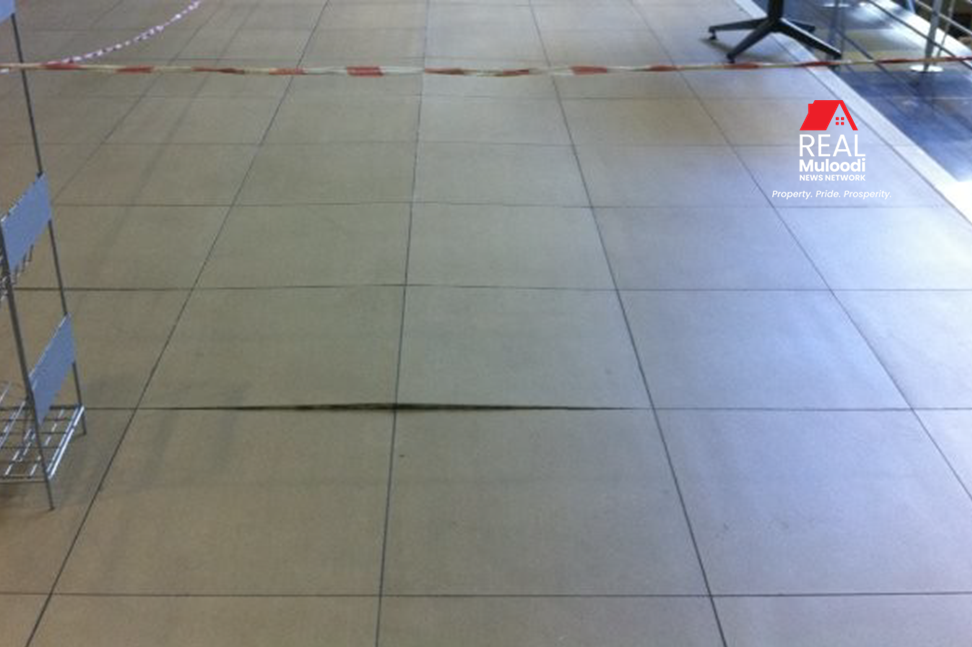UGANDA, Kampala | Real Muloodi News | Tiles are a common feature in modern-day homes, often used on floors and walls for their aesthetic appeal and durability.
However, despite their numerous advantages, tiles can still detach from the floor or wall, leaving homeowners with a frustrating problem.
Take, for instance, Andrew Tukamushaba whose house floors at Kasangati were finished with tiles. Less than a year after moving into the house, Tukamushaba recalls reworking a relatively small section of the kitchen floor.
“I did not understand why newly laid tiles would detach from the floor because they looked firmly fitted. When I stepped on the affected area, I could feel a gap between the tiles and the floor,” Tukamushaba says.
“On inspecting the affected area with a tile installer, I discovered that one of the joints within the tiles had an opening and water had found its way under the tiles. It was rapidly spreading under the unaffected areas,” he adds.
In this article, we will explore the reasons behind tile detaching and the measures that can be taken to prevent it from happening.
Poor-quality Sand and Cement
One of the main reasons why tiles detach from the floor or wall is due to poor quality sand and cement used during installation.
According to Ibrahim Kajjoba, a tiles installer, sand that is mixed with insufficient cement and tile adhesive can lead to detachment. To prevent this, Kajjoba advises that before laying tiles, the floor should be made wet, and a little cement sprinkled on it. This ensures that the tile adhesive sticks to the floor and prevents detachment in the future.
“Tiles detach from floors and walls because of poor quality sand that could have been used during laying. If this bad sand was not mixed with enough cement and tile adhesive, it could also lead to the detachment,” Kajjoba explains.
“Even if your builders cast a second layer of cement mixed with sand without wetting the floor or sprinkling a little cement, the tiles will in future still detach from the floor or the wall. It is one area that is sensitive during house finishing,” Kajjoba advises.
Tile Size and Adhesive
Tile size can also affect the likelihood of detachment. Larger tiles, such as those measuring 60×60 inches, are more prone to detachment due to their weight and the space they take up compared to smaller tiles.
To ensure tiles attach firmly to the floor or wall, the recommended mixture of sand to cement should be one wheelbarrow of lake sand to one bag of cement (1:1), well mixed with tile adhesive.
Kajjoba advises that certain tile types also require tile adhesive to be applied during installation.
Grout and Water
Francis Dumba, another tiles installer, recommends using grout to fill and cover tile joints after using sand and cement and tile adhesive.
Grout helps to prevent water or any other liquid from finding its way underneath the tiles and causing damage.
Dumba advises that the type or quality of grout used does not matter as long as the recommended amount of water is used, as indicated on the packaging.
“The type or quality of grout you use does not matter as long as your builders use the amounts of water recommended by the manufacturer. It is always prescribed on the packaging material,” Dumba advises.
It is also important to replace any grout within tile joints that have diminished over time to prevent water from finding its way underneath the tiles. This can lead to detachment from the floor or wall, especially in the case of a water pipe leakage.
Care for Tiles
Tiles require regular care to maintain their aesthetic appeal and functionality. To prevent water damage, experts advise against letting water stagnate on tiles during daily cleaning or mopping.
Regular sweeping and vacuuming can help remove dirt and debris that can scratch and dull the surface of the tiles.
For tougher stains, mild detergent or specialised tile cleaning products are recommended.
However, it is important to avoid using abrasive cleaners or scrubbers that can scratch the tiles.
Tiles should also be sealed periodically to prevent water and other liquids from penetrating the surface and causing damage. Different types of tiles require different sealing frequencies, so it is important to consult the manufacturer’s recommendations or seek advice from a professional.
By following these care tips, tiles can maintain their appearance and durability for years to come.
READ MORE LIKE THIS:



